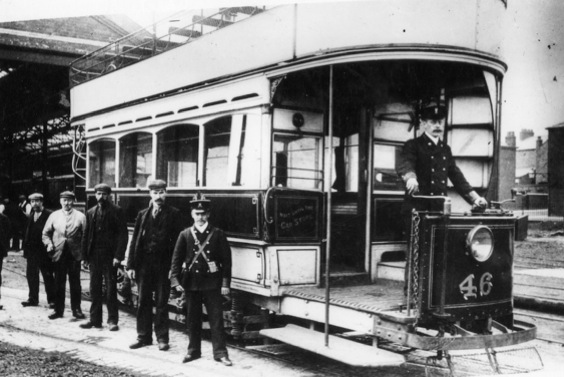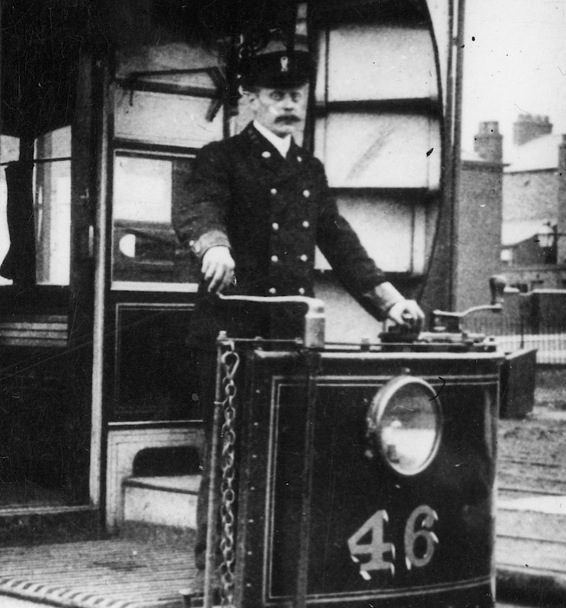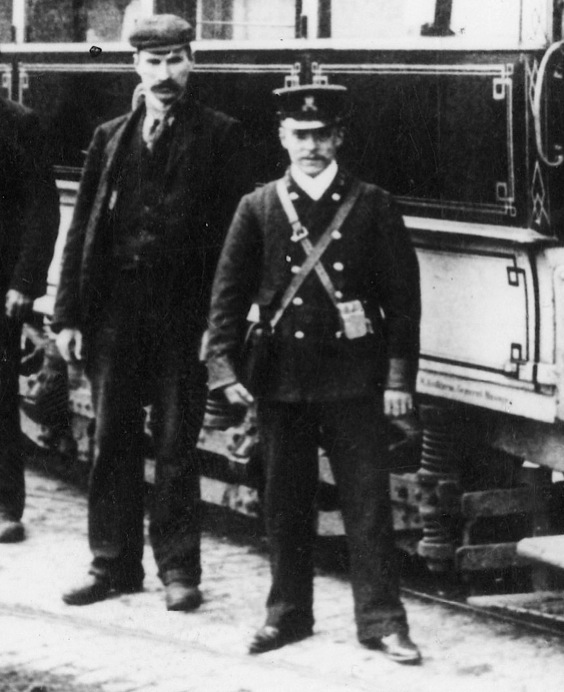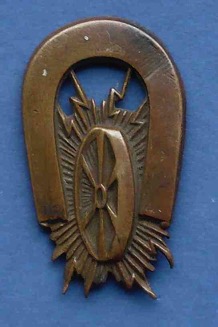Middleton Electric Tramways
History
The Middleton Electric Traction Co Ltd was a subsidiary of the much larger British Electric Traction Company Ltd (BETCo), a concern which at its zenith either owned, part-owned or leased almost 50 tramway concerns across the British Isles.
The first service on the newly built, standard-gauge, overhead electric tramway ran on the 27th March 1902. The system, which was centred on Middleton (north of Manchester and east of Oldham), totalled 8.57 miles, and comprised three lines: northwards to Sudden, westwards to Prestwich; and eastwards to Oldham. Although the METCo tracks met those of Salford Corporation Tramways (at Rhodes near Prestwich), Rochdale Corporation Tramways (at Sudden), Manchester Corporation Tramways (in Middleton), and Oldham Corporation Tramways (at Werneth), the tracks were never connected during the time the company operated the tramway.
The system was operated successfully until the Great War, but like many tramways, it emerged from the conflict to face a perfect storm of deferred renewals (track and cars), maintenance backlogs, increased wages, ever-rising costs and imposed fare ceilings that made some services unremunerative. Despite these challenges, the company still managed to turn a profit, something that it had managed to achieve in every year it operated (no mean feat). Nevertheless, it was probably with some degree of relief that the company entered into negotiations to sell the concern to the local authorities — Rochdale Corporation, Middleton Corporation and Chadderton Urban District Council — who had the right to purchase the undertaking 25 years from the date the Light Railway Order had been granted (15th December 1898). Agreement was eventually reached, and the company's lines and infrastructure were handed over to the respective authorities on the 16th June 1925, Chadderton UDC immediately selling their share to Oldham Corporation, with Middleton Corporation leasing their newly acquired lines to Manchester Corporation (who already worked the Middleton Corporation-owned line southwards along Manchester New Rd to the municipal boundary).
The local authorities involved had of course had the time to plan, agree and construct connections between the newly acquired lines and those of the neighbouring municipal systems i.e., to the MCT system at Middleton; to the RCT system at Sudden; to the SCT system at Prestwich (Rhodes); and to the OCT system at Werneth. The system was briefly run as a Joint Committee of the local authorities, but from the 9th August 1925, the three main corporation tramways officially took over, running services as follows: Rochdale to Manchester via Middleton (MCT and RCT); Victoria Bridge Street in Salford to Middleton (SCT); and from Oldham Market Place to Middleton Market Place (OCT).
With the switch to buses (and in some cases trolleybuses), the municipal tramway operators gradually retrenched, the last tram of all over former METCo tracks — operated by Oldham Corporation Tramways — running on the 11th June 1935.
Uniforms
Photos depicting staff of the METCo are very rare, but those that have survived clearly show that they were issued with the familiar and largely regulation BETCo uniform. Although jackets appeared to vary somewhat between BETCo systems, as well as across the decades, the cap badges, collar designations and buttons invariably followed a standard pattern.
The first style of uniform was double-breasted, with two rows of five buttons and lapels; the latter carried individual embroidered initials — ’M E T’ — on both sides. Later photographs indicate that this style of tunic was eventually superseded by a single-breasted design with five buttons and upright collars, the latter carrying individual metal letters — ‘M E T’ — on the bearer's right-hand side and an employee number on the left-hand side, both presumably brass. Caps were military in style with a tensioned crown (top) and a glossy peak, and carried a standard brass BETCo ‘Magnet & Wheel’ cap badge (see below) below which, an employee number was worn.
Although photographic evidence has proven elusive, inspectors most probably wore single-breasted jackets edged in a finer material than the main body, with hidden buttons — or more likely a hook and eye affair — a slit breast pocket and upright collars; the latter would have probably carried the designation Inspector in embroidered script-lettering. It is currently unclear what style of cap was worn, however, it would more than likely have carried the bearer's grade — Inspector — in embroidered script-lettering on a hat band, with the standard BETCo cap badge worn above.
It is currently unclear whether Middleton, like the vast majority of British tramways, employed the services of women during the Great War to replaced male staff lost to the armed services.
Further reading
For a history of the tramway, see: 'Middleton Tramways' By A K Kirby; Manchester Transport Museum Society (1976).
Images
Motormen and conductors
A conductor, motorman and depot staff posing with Tramcar No 46, which belonged to the Oldham, Ashton and Hyde Electric Tramways, at the Middleton depot — photo dated 7th March 1903 (C K Healey). Tramcar No 46 was on hire from the OA&HET, another local BETCo-owned system. Author's collection
A blow-up of the above photo showing the motorman, who is wearing a BETCo 'Magnet & Wheel' cap badge with employee number beneath it. His right-hand lapel carries embroidered initials, 'M E T'.
Another blow-up of the above photo, this time showing the conductor.
Standard British Electric Traction Company ‘Magnet & Wheel’ cap badge — brass